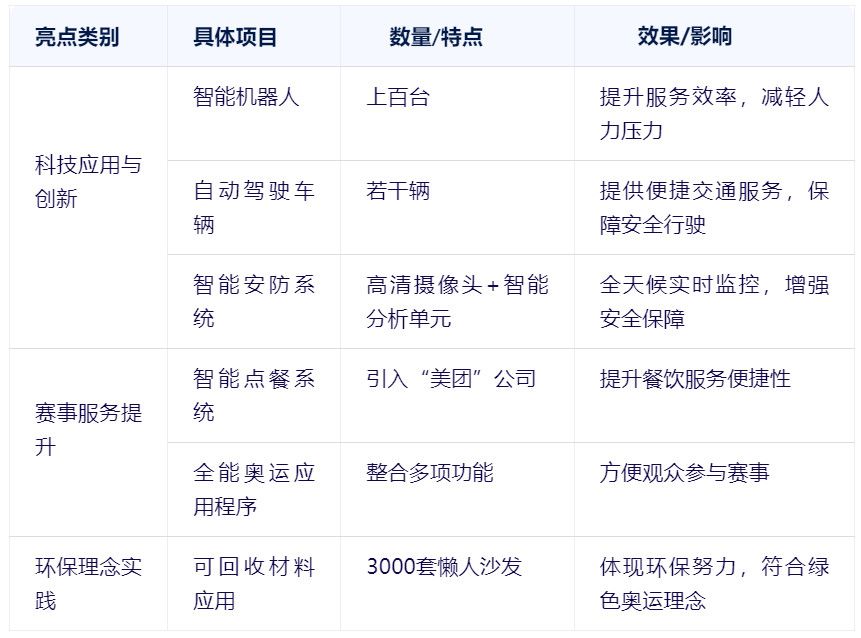文章目录
- 引言
- 复习
- 有塔游戏——关联传递性实现
- 复习实现
- 参考实现
- 新作
- 随机链表的复制
- 个人实现
- 参考实现
- 排序链表
- 个人实现
- 参考实现
- 二叉树章节
- 二叉树的中序遍历
- 个人实现
- 二叉树的最大深度
- 个人实现
- 参考实现
- 反转二叉树
- 个人实现
- 参考实现
- 总结
引言
- 旅游完回来了,今天继续开始准备秋招了,目前除了继续刷算法,还应该抽出时间继续完善一下项目。除此之外,关于很多java的底层的东西,都是看过了,就忘记了,以后每天得抓紧时间开始背书,不然只会更加难过!
- 加油!
复习
有塔游戏——关联传递性实现
题目内容
-
给你一个阈值x,然后给你m个点的坐标,然后计算每一个点彼此之间的距离,如果距离小于等于x,那么这两个点就是相关联的。关联具有传递性,A和B关联,B和C关联,那么A和C关联。
-
输出所有关联的集合,每一行表示对应序号的点是关联的,使用空格尽心分割,同一行按照从小到大进行排序,不同行之间按照首字母的从小到大进行排序。
-
第一次做学习
-
输入样例
2.0
5
1.0 2.0
3.0 2.0
1.0 3.0
5.0 9.5
8.9 1.0
- 输出样例
0 1 2
3
4
复习实现
- 这里使用深度遍历dfs去实现,深度是遍历对应的元素数量,单次遍历的内容是当前元素在邻接矩阵中所在的行。
import java.util.ArrayList;
import java.util.Collections;
import java.util.List;
import java.util.Scanner;class Main{static List<Integer> list = new ArrayList<>();static boolean[] visited;static boolean[][] link;static void dfs(int idx,int count){for(int i = 0;i < count;i ++){if(link[idx][i] && !visited[i]){visited[i] = true;list.add(i);dfs(i,count);}}}public static void main(String args[]){Scanner in = new Scanner(System.in);float edge = (float)Math.pow(in.nextFloat(),2);int count = in.nextInt();float[][] nodes = new float[count][2];for(int i = 0;i < count;i ++){nodes[i][0] = in.nextFloat();nodes[i][1] = in.nextFloat();}// cal the neighbour matrixlink = new boolean[count][count];for(int i = 0;i < count;i ++){for(int j = i + 1;j < count;j ++){float dist = (float)(Math.pow(nodes[i][0] - nodes[j][0],2) +Math.pow(nodes[i][1] - nodes[j][1],2));link[i][j] = edge >= dist;link[j][i] = link[i][j];}}// gene the visited matrix and dfs the resultvisited = new boolean[count];for(int i = 0;i < count;i ++){if(!visited[i]){visited[i] = true;list.add(i);dfs(i,count);Collections.sort(list);System.out.println(list);list.clear();}}}
}

参考实现
- 这里看了一下GPT,使用了并查集实现,感觉代码比我写的要简洁,而且时间复杂度更低,没研究过并查集,一会去研究一下!
import java.util.*;public class PointsClusters {// 并查集中的查找操作private static int find(int[] parent, int i) {if (parent[i] != i) {parent[i] = find(parent, parent[parent[i]]);}return parent[i];}// 并查集中的合并操作private static void union(int[] parent, int[] rank, int x, int y) {int rootX = find(parent, x);int rootY = find(parent, y);if (rootX != rootY) {if (rank[rootX] > rank[rootY]) {parent[rootY] = rootX;} else if (rank[rootX] < rank[rootY]) {parent[rootX] = rootY;} else {parent[rootY] = rootX;rank[rootX]++;}}}// 计算点之间的关联集合public static List<List<Integer>> getConnectedComponents(double[][] points, double threshold) {int n = points.length;int[] parent = new int[n];int[] rank = new int[n];for (int i = 0; i < n; i++) {parent[i] = i;rank[i] = 0;}for (int i = 0; i < n; i++) {for (int j = i + 1; j < n; j++) {double dist = Math.sqrt(Math.pow(points[i][0] - points[j][0], 2) + Math.pow(points[i][1] - points[j][1], 2));if (dist <= threshold) {union(parent, rank, i, j);}}}Map<Integer, List<Integer>> components = new HashMap<>();for (int i = 0; i < n; i++) {int root = find(parent, i);components.computeIfAbsent(root, k -> new ArrayList<>()).add(i);}List<List<Integer>> result = new ArrayList<>();for (List<Integer> component : components.values()) {Collections.sort(component);result.add(component);}result.sort(Comparator.comparingInt(a -> a.get(0)));return result;}// 格式化输出public static String formatOutput(List<List<Integer>> components) {StringBuilder sb = new StringBuilder();for (List<Integer> component : components) {for (int i = 0; i < component.size(); i++) {if (i > 0) sb.append(" ");sb.append(component.get(i));}sb.append("\n");}return sb.toString();}public static void main(String[] args) {double x = 5.0;double[][] points = {{0, 0}, {1, 2}, {3, 4}, {8, 8}, {7, 7}};List<List<Integer>> components = getConnectedComponents(points, x);String output = formatOutput(components);System.out.print(output);}
}
并查集这个,就是合并成最小生成树呀,然后返回对应的最小生成树,这样做确实效率会更高一点,但是这个算法感觉要花比较多的时间重新做!
大概看了一下并查集,这里使用路径压缩,确实效果会更好,暂时先跳过,等到了图论的时候,在进行补充!
新作
随机链表的复制
- 题目链接


注意
- 输入的单纯是一个head头节点,返回也仅仅包含对应复制链表的head头节点
- 防止新的链表的指针指向旧的链表指针。
个人实现
- 这题如果没有随机指针,会简单很多,就单纯复制对应的链表以及对应的next指针就行。现在需要复制随机链表,如果每一个节点都需要进行遍历一次,这个时间复杂度太高了,这里如何保存对应的,指向它的指针,然后进行反向遍历!

/*
// Definition for a Node.
class Node {int val;Node next;Node random;public Node(int val) {this.val = val;this.next = null;this.random = null;}
}
*/class Solution {public Node copyRandomList(Node head) {if(head == null) return null;// define the dummy node to sotre the resNode dummy = new Node(-1);Node current = dummy;// define the map to store the pos and pointer of the node Node[] idxToPointer = new Node[1001];Map<Node,Integer> map = new HashMap<>();Node temp = head;for(int i = 0;temp != null;temp = temp.next){map.put(temp,i);current.next = new Node(temp.val);idxToPointer[i] = current.next;current = current.next;i ++;}// traverse the origin list to copy random pointertemp = head;for(int i = 0;temp != null;temp = temp.next,i ++){int randomIdx = map.getOrDefault(temp.random,-1);if(randomIdx != -1){idxToPointer[i].random = idxToPointer[randomIdx];//System.out.println(idxToPointer[i].random.val);}}return dummy.next;}
}

这里忘记加上对应的i的迭代条件,调了半天没有调整出来,还是gpt给我调整出来,这可不行,如果是手撕的话,我这里写错了,就尴尬了!
参考实现
- 这里使用回溯实现的,将原来的链表和新创建的链表进行绑定,通过回溯遍历对应的链表,如果不存在对应链表就进行创建。
- 通过一个map来维系
- 如果没有找到,说明当前的节点没有遍历过,然后创建对应的指针。
- 如果找到了,说明当前节点 遍历过,直接返回对应连接就行了。
/*
// Definition for a Node.
class Node {int val;Node next;Node random;public Node(int val) {this.val = val;this.next = null;this.random = null;}
}
*/class Solution {Map<Node,Node> map = new HashMap<>();public Node copyRandomList(Node head) {if(head == null) return null;// recursive the list// 下述是没有遍历过对应的节点,然后创建对应的节点if(!map.containsKey(head)){Node newHead = new Node(head.val);map.put(head,newHead);newHead.next = copyRandomList(head.next);newHead.random = copyRandomList(head.random);}// 遍历过对应的节点,这里是直接返回return map.get(head);}
}

排序链表


注意
- 时间复杂度要在nlogn,说明可以使用快排,然后在直接相连对对应的节点就行了。
个人实现
- java中collectionss.sort方法实现是通过timesort,时间复杂度就是O(nlogn),然后我其他两个操作的时间复杂度都是O(n),所以就是最优的时间复杂度!
- 直接找到每一个节点,然后进行排序就行了。
/*** Definition for singly-linked list.* public class ListNode {* int val;* ListNode next;* ListNode() {}* ListNode(int val) { this.val = val; }* ListNode(int val, ListNode next) { this.val = val; this.next = next; }* }*/
class Solution {public ListNode sortList(ListNode head) {if(head == null) return head;List<ListNode> list = new ArrayList<>();ListNode temp = head;while(temp != null) {list.add(temp);temp = temp.next;}Collections.sort(list,(ListNode a,ListNode b)->Integer.compare(a.val,b.val));for(int i = 0;i < list.size() - 1;i ++){list.get(i).next = list.get(i + 1);}list.get(list.size() - 1).next = null;;return list.get(0);}
}

不好意思,我没看到还是需要常数级别的时间复杂度,这里没注意到,有问题!
补充
- 指定sort排序方式的lambda表达式
- 这段内容是没写出来,是我问了GPT才知道的,不行呀,如果下次笔试或者手撕这样就尴尬了!
Collections.sort(list,(ListNode a,ListNode b)->Integer.compare(a.val,b.val));
参考实现
- 这里使用了归并排序的自底向上版本,能够在O(1)的空间复杂度内,实现O(nlogn)的时间复杂度排序,代码有点复杂,要我写肯定写不出来,放弃了!
- 但是大概的框架是基本上都知道的!
/*** Definition for singly-linked list.* public class ListNode {* int val;* ListNode next;* ListNode() {}* ListNode(int val) { this.val = val; }* ListNode(int val, ListNode next) { this.val = val; this.next = next; }* }*/
class Solution {public ListNode sortList(ListNode head) {int n = 0;for(ListNode temp = head;temp != null;temp = temp.next) n++;// traverse the listListNode dummy = new ListNode(-1);dummy.next = head;for(int i = 1;i < n;i *= 2){// 这里是每一次都是二分,所以每一次都往后两倍ListNode cur = dummy;for(int j = 0;j + i <= n;j += i*2){// 这里每一次都是排序0 到2*i的序列ListNode p = cur.next,q = p;// 向后遍历i次,到达第i个位置,也就是下一个序列开始的部分for(int k = 0;k < i;k ++) q = q.next;int x = 0;int y = 0;while(x < i && y < i && p!= null && q != null){if(p.val <= q.val) {cur.next = p;cur = cur.next;p = p.next;x ++;}else{cur.next = q;cur = cur.next;q = q.next;y ++;}}while(x < i && p != null) {cur.next = p;cur = cur.next;p = p.next;x ++;}while(y < i && q != null){cur.next = q;cur = cur.next;q = q.next;y ++;}cur.next = q;} }return dummy.next;}
}

二叉树章节
- 二叉树在拼多多主管面的时候,被狠狠的说了,说我没怎么做过二叉树的题目,然后就挂了,拼多多主管面只能说自己被别人问的一览无余,底裤都不剩了,确实能力不行!
- 不过无所谓了,继续加油!
二叉树的中序遍历
- 题目连接


注意
- 节点的数量可能为0,所以需要处理为空的情况
个人实现
- 前序遍历:左中右,然后进行输出
递归实现
/*** Definition for a binary tree node.* public class TreeNode {* int val;* TreeNode left;* TreeNode right;* TreeNode() {}* TreeNode(int val) { this.val = val; }* TreeNode(int val, TreeNode left, TreeNode right) {* this.val = val;* this.left = left;* this.right = right;* }* }*/
class Solution {List<Integer> list;public void dfs(TreeNode temp){if(temp.left != null) dfs(temp.left);list.add(temp.val);if(temp.right != null) dfs(temp.right);}public List<Integer> inorderTraversal(TreeNode root) {list = new ArrayList<>();if(root == null) return list;dfs(root);return list;}
}

迭代实现
- 迭代实现,就是使用stack模拟函数调用的堆栈进行实现
import java.util.ArrayList;
import java.util.List;
import java.util.Stack;class Solution {public List<Integer> inorderTraversal(TreeNode root) {List<Integer> list = new ArrayList<>();Stack<TreeNode> stk = new Stack<>();TreeNode current = root;while (current != null || !stk.isEmpty()) {// 走到最左边的节点while (current != null) {stk.push(current);current = current.left;}// 当前节点为空,弹出栈顶节点并访问它current = stk.pop();list.add(current.val);// 准备访问右子树current = current.right;}return list;}
}
这里没有理出来,这种迭代,实现起来,怪怪的,没整好
问题
-
java中使用什么来模拟栈
-
push(x)将元素压入栈顶
-
pop()弹出栈顶元素
-
peek()查看栈顶元素,但是不移除
-
isEmpty()查看是否为空
-
java中队列的操作
-
add()元素插入队列,队列满就返回异常
-
offer()元素插入队列,队列满就返回false
-
remove()移除队头元素,如果队列为空,就抛出异常
-
poll移除并返回队列元素头部,如果队列为空,就返回null
-
peek返回队列元素,但是不删除
二叉树的最大深度
- 题目连接


注意 - 节点的数量可能为空,特殊处理
- 二叉树
个人实现
- 树形结构,完全就是回溯的复刻,所以可以直接使用dfs进行实现
- 高度就是迭代限制
- 单次迭代的范围就是两个节点
- 按照某种顺序遍历一次就行了
/*** Definition for a binary tree node.* public class TreeNode {* int val;* TreeNode left;* TreeNode right;* TreeNode() {}* TreeNode(int val) { this.val = val; }* TreeNode(int val, TreeNode left, TreeNode right) {* this.val = val;* this.left = left;* this.right = right;* }* }*/
class Solution {int maxDept = 0;void dfs(TreeNode root,int idx){if(root == null) {maxDept = Math.max(idx , maxDept);return;}dfs(root.left,idx + 1);dfs(root.right,idx + 1);}public int maxDepth(TreeNode root) {if(root == null) return 0;dfs(root,0);return maxDept;}
}
参考实现
dfs
- 这个问题可以拆解,拆解成左右两个子树的最大值,然后加一,就是当前的子树的最高的高度了
/*** Definition for a binary tree node.* public class TreeNode {* int val;* TreeNode left;* TreeNode right;* TreeNode() {}* TreeNode(int val) { this.val = val; }* TreeNode(int val, TreeNode left, TreeNode right) {* this.val = val;* this.left = left;* this.right = right;* }* }*/
class Solution {public int maxDepth(TreeNode root) {if(root == null) return 0;else{int lDept = maxDepth(root.left);int rDept = maxDepth(root.right);return Math.max(lDept,rDept) + 1;}}
}

真是简洁!!发现这种问题拆解,始终做的不是很流畅,或者说优点奇怪!做不出来,多练习一下!
反转二叉树
- 题目连接


注意
- 队列可能为空,需要特殊处理
个人实现
- 这里就是交换两个子节点,中间可能需要要给临时的保存一下
- 这也是一个问题嵌套的情况,如果要交换当前节点的左右子节点,可以交换左右子树的两个节点
/*** Definition for a binary tree node.* public class TreeNode {* int val;* TreeNode left;* TreeNode right;* TreeNode() {}* TreeNode(int val) { this.val = val; }* TreeNode(int val, TreeNode left, TreeNode right) {* this.val = val;* this.left = left;* this.right = right;* }* }*/
class Solution {public TreeNode invertTree(TreeNode root) {if(root == null) return null;else{TreeNode temp = invertTree(root.left);root.left = invertTree(root.right);root.right = temp;return root;}}
}

太舒服了,真的是爽题,一下子就出来了!
参考实现
不看了,方法基本上和我一样的,就不写了
总结
-
放假回来第一天,题目成功刷完,直到现在几点了吗?十二点四十,我是真的努力呀!我都佩服自己了,今天又是六道题!
-
明天面试加油,能过就过!



















